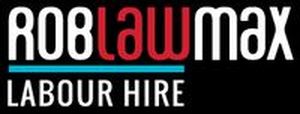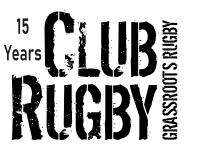Superior tactics win shield for Wellington

Above: Wellington players celebrating with the Ranfurly Shield in 1956 after they'd beaten holders Canterbury in one of the province's great triumphs in Christchurch. Photo credit: Evening Post 24/9/1956.
Wellington teams ran hot in the 1950s, winning and losing the Ranfurly Shield twice in three years in this period.
Wellington beat Waikato 9-6 in August 1953 to win the Ranfurly Shield and they held it for seven defences, including thrilling wins over Southland, Otago, Auckland and Taranaki, before Canterbury ended the party. In a midweek fixture at a sold out Athletic Park Canterbury came to town and won in a cakewalk, 24-3.
The two provinces then entered into a cold war of sorts in 1954, entering into a feud and not meeting at all that year. This was because immediately following the 1953 win, Canterbury's President Bill Dalley shot from the hip at the after match and announced that when Wellington and Canterbury met for their first of annual home-and-away matches at Lancaster Park in July 1954 the shield would be at stake. This was subsequently vetoed by the CRFU who set their fixtures list not Dalley on his own. But the WRFU was livid that this decision was made and the two teams never met all in 1954.
Canterbury subsequently held off all challengers in 1954 and 1955, and they finally defended it against Wellington on 7 September 1955. The atmosphere was electric at Lancaster Park and confident Wellington supporters arrived at the ground with a big coffin which they said had been brought to Christchurch to take away the corpse of Canterbury rugby.
On paper, the Wellington side appeared strong, with four current and future All Blacks in the forwards in Ivan Vodanovich, Bill Clark, Nev MacEwan and Don McIntosh and dangerous backs such as wings Ron Jarden and Tom Katene. Instead it was Canterbury that went on a scoring spree just before and just after halftime and they romped to a 19-0 lead, eventually winning 30-11.
The following season, 1956, Canterbury brushed off Hawke's Bay, Wanganui, West Coast, South Canterbury and Southland.
Then in their 24th challenge, they put it on the line against Wellington again.
The date was 22 September 1956.
Heading into the Wellington match, Canterbury had accepted challenges from 16 of the then 28 New Zealand unions.

Canterbury were clear favourites, for a number of reasons, not least the fact that they'd won seven out of eight matches between the two provinces since 1951 and that they had made Lancaster Park a fortress against all comers.
First was Wellington's patchy form. In late June Wellington had put in an almighty effort in losing 6-8 to the Springboks. Since then, apart from smashing Poverty Bay 24-0, Wellington had lost to NZ Universities, Wanganui, Taranaki, Auckland and Southland. The previous week Wellington had shown improvement in beating Otago 6-3 at Carisbrook, but at the same time Canterbury had swatted away Southland 17-3 in a shield challenge.
Second was the noted absence of Wellington's All Blacks wings through injury, pocket-rocket Tom Katene and the team's star, Ron Jarden. Jarden's value to the side at this time was immense. Since 1952 he had scored 383 points out of a possible 680 for Wellington in representative matches, plus he had set up many more tries with his electric play.
Third was illness. Some Wellington's players plus selector and assistant coach Vince Paino were laid low with a cold.
All in all, Canterbury weren't unduly worried about Wellington's challenge, even after the North Island tourists had beaten South Canterbury 16-11 on the Wednesday before the big match.
If they had known what Paino was cooking up on his sick-bed they should have been.
The history books show that Wellington triumphed 8-0 - but the key to the win was in the planning beforehand more than anything else.
As Lindsay Knight explained in his 1980 Ranfurly Shield bible, Shield Fever, the Wellington teams of the early 1950s were bred by coach Clarrie Gibbons to play all out attractive rugby. This led to some sizzling results, except on the occasions, such as the 1953 and 1955 losses to Canterbury when they were met by well-drilled Canterbury packs that stopped them in their tracks.
On this occasion Gibbons' assistant Paino hatched a plan to throw Canterbury off guard by completely changing their tactics. Before playing Canterbury, Wellington had met Southland, Otago and South Canterbury and Canterbury's spies in the stands saw no deviation from their usual free running tactics and saw no cause for concern - especially given that Jarden was missing.
Knight recounts the story in Shield Fever: "Paino's plan basically boiled down to two elements. The first was to realize the Canterbury style was built round feeding off the opposition's mistakes. Therefore the fewer mistakes Wellington made the better. Wellington thus had to play closer to the scrum. If halfback Alby Makeham had the chance he was to kick, aiming between the middle of scrums and lineouts. First-five Jackie Dougan was also to kick in similar fashion and if he did pass to his second-five Kara Puketapu he was designated to go in and take the tackle. The object of this was to isolate Canterbury's dangerous centre Alan Elsom, who in 1955 which his crash tackling, had been the key figure of the match.
"The second aspect of the plan was to nullify Canterbury's use of the blindside. If Canterbury was putting the ball into scrums Wellington would let it have it, making no effort to contest tightheads. Instead it had its blindside wingers posted back on defence, the blindside flanker Don McIntosh and No. 8 Alan Clark were also deployed to plug shortside weaknesses and the openside flanker, Bill Clark took up a stance between the second-five and centre."
The tactics worked perfectly. The Dominion saying afterwards: "Close marking and resolute tackling saw Canterbury falter under pressure."
The Evening Post explained: "It may not have been magnificent, but it was war - war, anyway, in the Rugby sense. That describes the type of game Wellington played in beating Canterbury 8-0 to win the Ranfurly Shield." This report adding that the Wellington players "did what they had been asked to do and did it like heroes."
No. 8 Clarke scored the only try of the match and second five-eighth Puketapu kicked a sideline conversion and James Johnstone kicked a penalty.
The following week Jarden returned to the side and Wellington locked the shield away for the summer with a 9-6 win over Auckland. The following season they beat Wairarapa Bush 22-9, Poverty Bay 15-3 and Wanganui 34-5, before Otago ended their tenure with a 19-11 win.
References:
The Dominion September 1956
The Evening Post September 1956
Knight, Lindsay, Shield Fever, Rugby Press, Auckland 1980.
Steven White, 19 Mar 2019
Adam Julian, 19 Mar 2019
Steven White, 12 Mar 2019
Adam Julian, 04 Mar 2019
Steven White, 12 Feb 2019








.jpg)





